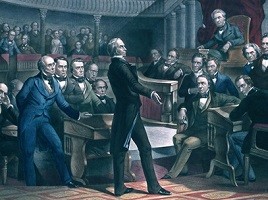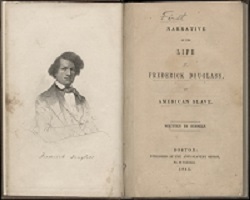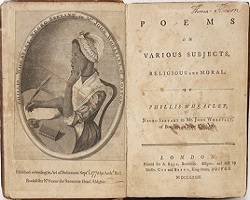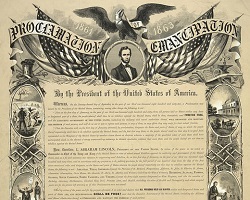Timeline of the Life of Harriet Tubman
C 1820 – Harriet Ross Tubman, born Araminta “Minty” Ross, was born a slave in the plantation of Edward Brodess in Dorchester County, Maryland. Her mother was Harriet “Rit” Green owned by Mary Pattison Brodess; and her father was Ben Ross owned by Anthony Thomson.
1825 – Young Araminta was hired out to other households. Her first outside job was as a nursemaid where she was violently and frequently beaten when she let the baby cry. She was then hired to set muskrat traps. Because of the nature of the job she fell ill and was sent back to Brodess.
1833 – Araminta was severely injured in the head with a heavy metal weight aimed at a runaway slave. After the injury she started having seizures which affected her for the rest of her life. She started having premonitions and vivid dreams, she said that God communicated with her.
1840 – Her father, Ben Ross, was manumitted when he turned 45 years old. She found out that her mother’s owner’s will stipulated that she and her children be manumitted when they reached 45 years old. Brodess refused to honor his mother’s will.
1844 – Araminta married a free black man, John Tubman.
1849 – Harriet fell ill. Her owner, Brodess, died leaving the plantation in a dire financial situation. Three of her sisters, Linah, Soph and Mariah Ritty, were sold.
September 17 – Harriet and her brothers, Ben and Henry, escaped from the Poplar Neck Plantation. Ben and Henry had second thoughts and returned to the plantation. The newspaper The Cambridge Democrat published a $300 reward for the return of Harriet and her two brothers. Harriet travelled 90 miles to Pennsylvania, a free state, using the Underground Railroad.
She changed her name to Harriet in honor of her mother and took her husband’s last name, Tubman.
1850 – Passage of the Fugitive Slave Law as part of the Compromise of 1850. Started working with Quaker abolitionist Thomas Garrett and Frederick Douglass.
December 1850 – Using her connections in the Underground Railroad, Harriet took her first trip to guide a family in their journey to freedom. Her niece, Kessiah, her husband, John Bowley, and their two children were freed from the bondage of slavery.
1851 – Returned for her husband but he refused to leave. He stayed in Dorchester County with his new wife Caroline.
The Fugitive Slave Act of 1850 made Tubman re route the Underground Railroad to Canada. For the next six years her base of operation was in North Street, St. Catherines, Ontario.
1858 – Tubman met John Brown. She helped recruit supporters for the Harper’s Ferry attack. Brown called her “General Tubman”.
1859 – Harper’s Ferry Raid. John Brown was executed in December.
Abolitionist and US Senator, William H Seward, sold Tubman a piece of land on the outskirts of Auburn, New York for $1,200. It became her home for the rest of her life.
1860 – She took her last mission to rescue her sister. When she arrived she found out that she had died. Instead she took the Ennals family.
Abraham Lincoln was elected President of the United States.
1861 – Beginning of the American Civil War. Tubman worked as a cook and nurse in South Carolina and Florida.
Tubman helped General David Hunter recruit former slaves for a regiment of African American soldiers. She served as a spy and scout under the command of Col. James Montgomery.
1863 – Tubman became the first woman to lead an assault during the Civil War in the Combahee River Raid where 700 slaves where set free.
President Abraham Lincoln issued the Emancipation Proclamation setting slaves in the Confederacy free.
1865 – End of the Civil War. Tubman returned home to Auburn, New York.
1869 – Harriet Tubman married Nelson Davis, 22 years younger than her. They were married in the Presbyterian Church.
Sarah Hopkins Bradford published a biography of Tubman, Scenes in the Life of Harriet Tubman. She got $1,200 from its publication.
1873 – Tubman borrowed money from a friend to buy gold. Before the exchange Tubman was attacked and her money stolen.
1874 – The couple adopted a baby girl named Gertie.
1880 – Tubman’s house in Auburn was destroyed by fire.
1886 – Bradford published a second biography, Harriet, the Moses of her People.
October 18, 1888 – Husband Nelson Davis died.
1898 – Tubman became involved in women’s suffrage giving speeches in Boston, New York and Washington.
Unable to sleep, Tubman underwent brain surgery at Boston’s Massachusetts General Hospital. She refused anesthesia and instead chewed on a bullet just like she had seen soldiers do when they had a leg amputated.
1903 – Tubman donated her property to the African Methodist Episcopal Zion Church in Auburn to be converted into a home for the “aged and indigent colored people”.
1908 – Harriet Tubman Home for the aged celebrated its opening.
1913 – Harriet Tubman died of pneumonia, she was 93. She was buried with military honors at Fort Hill Cemetery in Auburn, New York.





